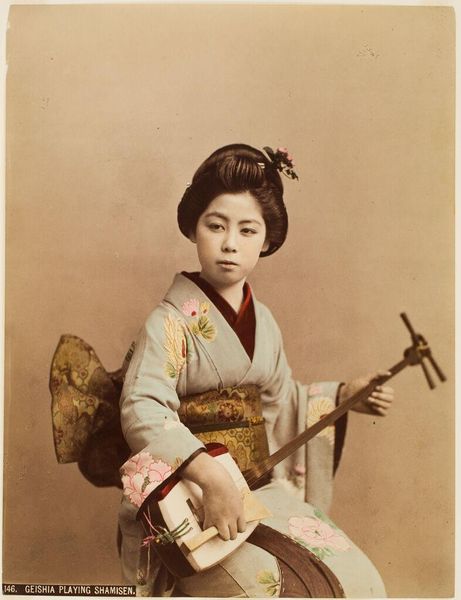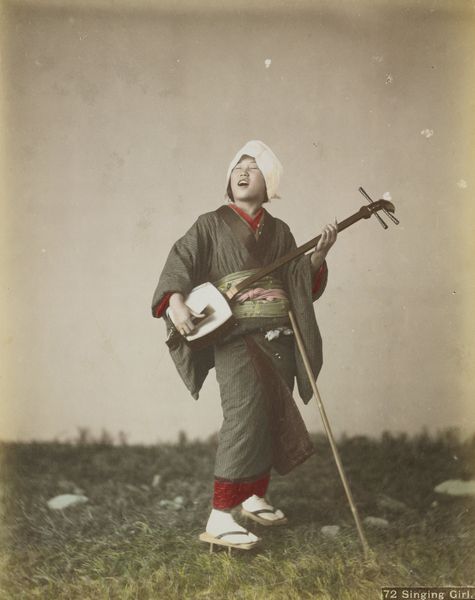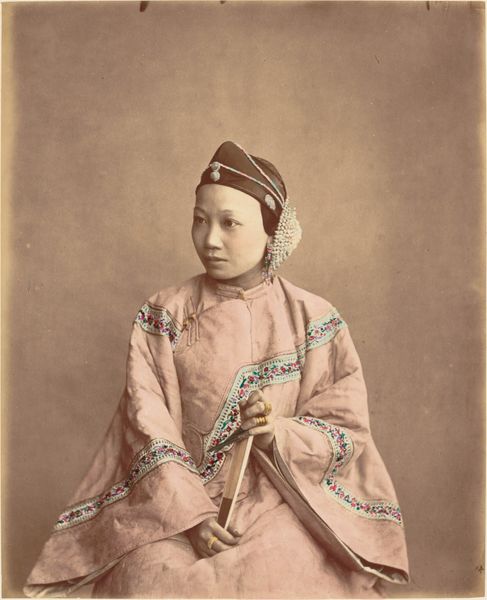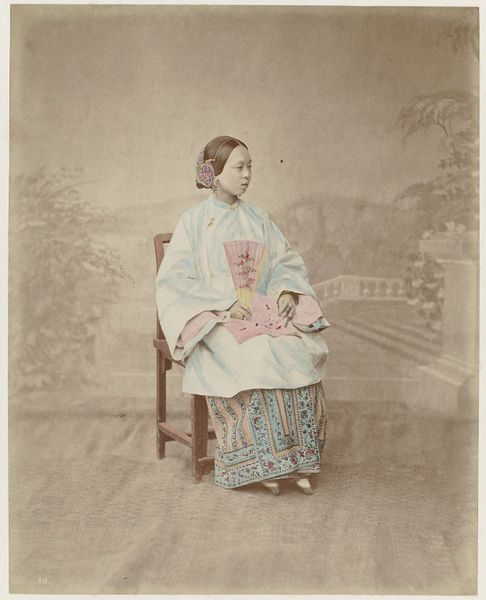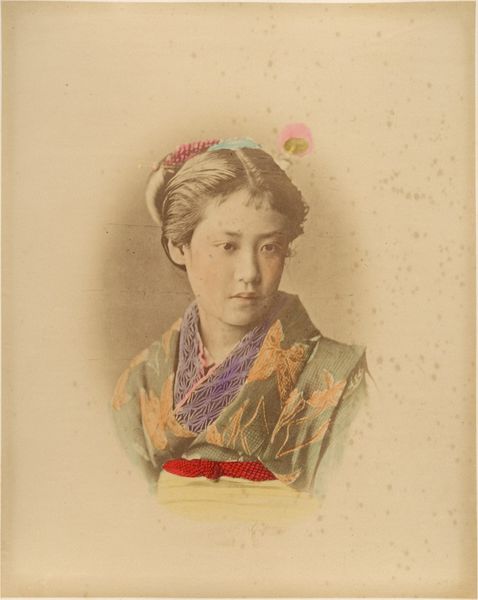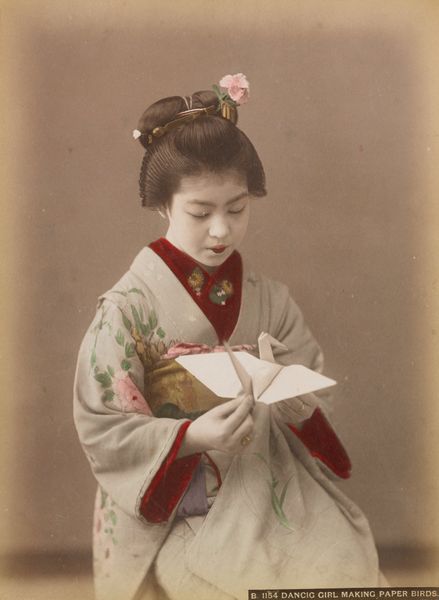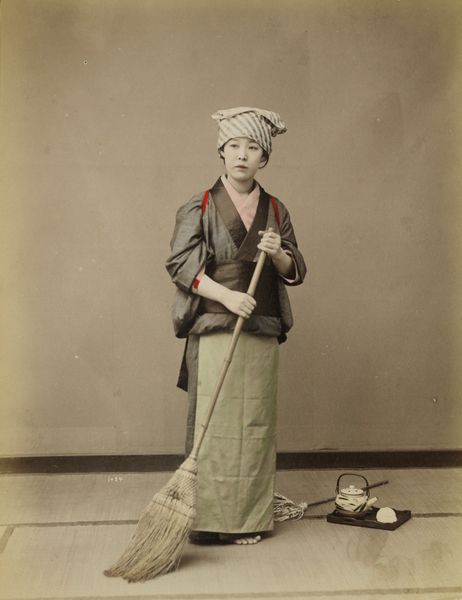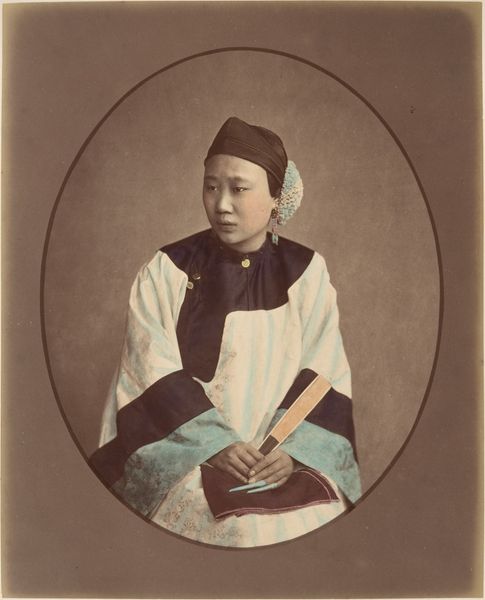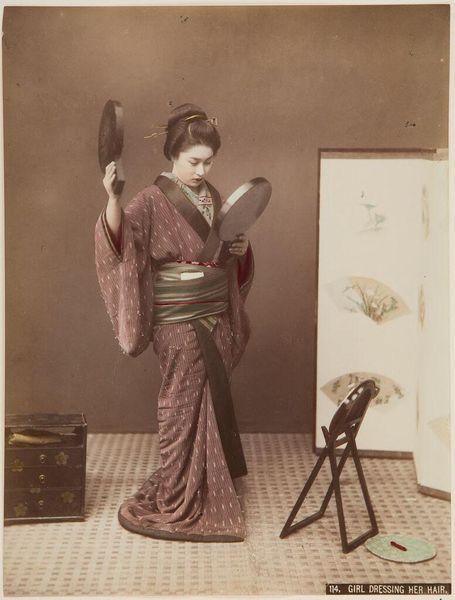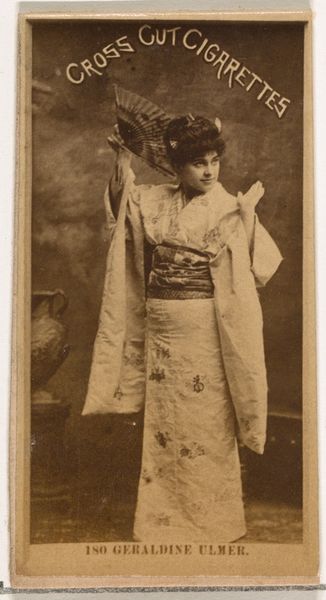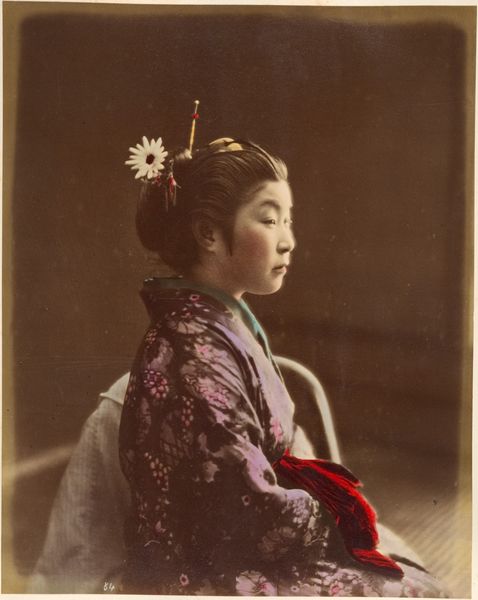
#
print photography
#
personal snap photobooth
#
picture layout
#
wedding photograph
#
photo restoration
#
archive photography
#
historical photography
#
couple photography
#
photo layout
#
celebration photography
Dimensions: height 258 mm, width 194 mm
Copyright: Rijks Museum: Open Domain
Curator: This is "Portret van een Japans meisje met een muziekinstrument", or "Portrait of a Japanese Girl with a Musical Instrument", a photographic print by Felice Beato, dating from somewhere between 1863 and 1884. It's currently housed right here at the Rijksmuseum. Editor: Immediately, the pose and framing strike me as highly staged, almost theatrical, which is offset by the subtle melancholic air about the subject. What stands out for you? Curator: The monochromatic palette directs the gaze right to her face, where her direct stare contrasts with the detailed rendering of her kimono and the instrument itself. Notice how the ovoid shape of the instrument echoes the soft oval framing of the photograph itself. The composition here employs semiotic tools, contrasting subject and object, to question how the subject is presented. Editor: Absolutely. And considering Beato’s wider body of work, largely war photography and documentation, this portrait shifts his practice toward, what we could now interpret, as orientalist studio practices catering for Western consumer taste of exotic cultures. Think about the labor involved in both the silk production for the garment and the making of the instrument she’s holding: each a commodity produced within global trade networks and then further transformed into art or an aesthetic display, which invites closer socio-economical reflection. Curator: Precisely. I’m intrigued how Beato captures light; it creates a certain luminous quality, especially around her face. It feels very deliberate, intended to aestheticize her as both an individual and representative of an ‘other’ culture. I appreciate its power, the almost reverential presentation. Editor: And yet, by contextualizing it within the history of colonial exchange, we must remember that such beauty was often crafted through exploiting materials and labour in different corners of the world, something to keep in mind. Curator: Yes, and those considerations push beyond purely formal interpretations. I feel like our exchange opens many doorways for thinking about art and how images can act as cultural artifacts. Editor: Indeed, the power lies not just in the image, but also understanding the realities embedded in its making and presentation.
Comments
No comments
Be the first to comment and join the conversation on the ultimate creative platform.
